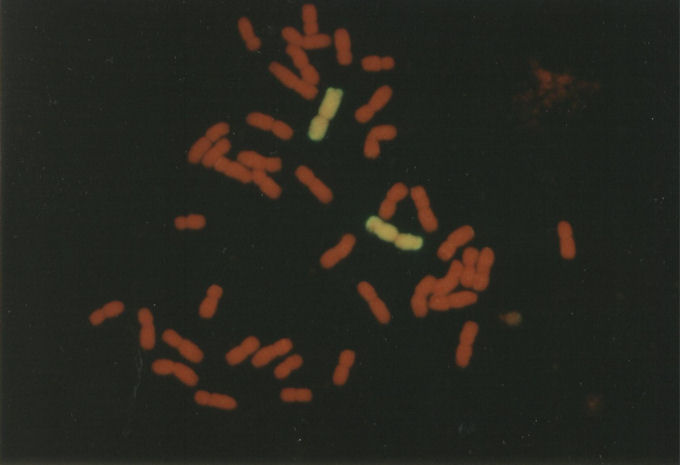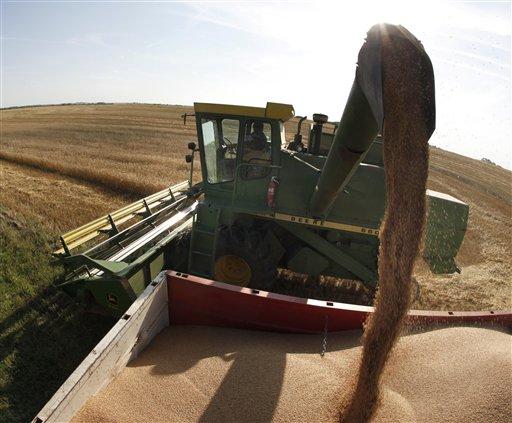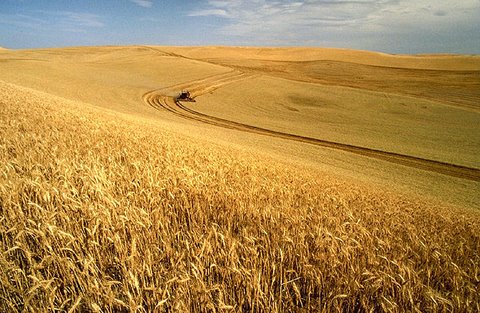The Blogging Farmer
Alex Tiller’s Blog on Agriculture and Farming***
No Blade of Grass
Have you ever read the book No Blade of Grass? (No Blade of Grass by John Christopher was published in May 1980 by Avon Books, New York.) The premise of the plot is based on a disease that had wiped out all species of grasses and cereal grains across the planet—including rye, barley, maize, oats—and the great grand-daddy of them all, wheat.
Considering that the human digestive system was not evolved to consume cereal grains, we sure depend a lot on them (chimpanzees normally won't touch cereal grains unless there isn't anything else—and cereal grains don't normally grow without being cultivated). In fact, one member of the grass family, wheat, is considered the most important crop in the world.
So when wheat production around the world is threatened, you can imagine that folks get nervous. What between droughts, changes in the global climate, environmental degradation and exploding population, wheat production everywhere could face some serious problems—and the human problems that would result should be patently obvious.
So...once again, the boys in the science labs are coming to the rescue. Across the pond over at the University of Liverpool, a fellow by the name of Niel Hall led a study that has succeeded in decoding the genome for wheat. You may remember a few years ago when scientists succeeded in decoding the human genome (it was all over the news). For some reason, this one has gotten a lot less publicity, and that's too bad—for a couple of reasons.
A pair of rye chromosomes substituting in a 2n=42 wheat genomeFirst, for the uninitiated who get turned off by "sciencey" stuff: a "genome" is basically the blueprint of a living organism. This blueprint is "written" in the DNA. For you and me, our genome determines our hair and eye color, our skin color, our bone structure and even what kind of diseases we're likely to come down with - among a lot of other things.
The human genome contains around 23,000 genes. To put this another way, if our genome is like a software application, the genes are the individual bits of code that put it together and allow us to write and save documents (us being the documents).
What surprised me is the fact that the wheat genome contains over 110,000 genes! Despite what it looks like, wheat is not a simple organism...and other grains, like rice and maize, are tinker-toys in comparison. Despite this, decoding it only took a year, thanks to new computer technologies (in contrast, it took scientists fifteen years to decode the human genome back in the day).
According to one of the scientists who participated in the study, the results are going to be made available to anyone—particularly botanists and breeders—who what to analyze it and use the information to come up with new, faster-growing heartier strains.
This all is coming not a moment to soon. The estimated worldwide wheat harvest for any given year is around 550 million metric tons, which sounds like a lot—but droughts and wild fires in Russia and floods in China as well as unseasonable hot weather in North America have all put a serious dent in that figure in recent months.
GMO. Right or wrong, it's an inevitable future.
John Christopher’s No Blade of Grass is available at www.amazon.com***
Selective breeding of wheat crops may provide a solution to the pressures of climate change and increased demand from a growing human population.Wheat Genome Mapped To Prevent Food Shortages
Wheat crops worldwide are struggling under the pressures of climate change, and it is becoming more difficult for suppliers to keep up with the demand from a growing human population. With the help of DNA mapping, wheat crops selectively bred for drought tolerance and high yields may provide a solution.
Scientists in the United Kingdom, working with the University of Bristol and the John Innes Centre, have mapped the DNA of bread wheat, and will make the genome available to crop breeders. It is hoped that this will assist in the selection of key agricultural traits which will provide higher crop yields with lower inputs.
With an estimated worldwide harvest of over 550 million tons, bread wheat is one of the most essential food crops in the world. Despite such heavy and widespread reliance on the crop, it is difficult for breeders to isolate and emphasize the genetic traits that would provide better agricultural outcomes. Scientists hope that mapping the wheat genome, which is five times larger than the human genome, will give breeders the tools they need.
Professor Neil Hall, from the Institute of Integrative Biology, says recent advances in technology made the project possible. “Sequencing the human genome took 15 years to complete, but with huge advances in DNA technology, the wheat genome took only a year,” he said. “The information we have collected will be invaluable in tackling the problem of global food shortage. We are now working to analyze the sequence to highlight natural genetic variation between wheat types, which will help significantly speed up current breeding programs.”
The project was undertaken at the University of Bristol’s Centre for Genomic Research, with funding provided by the Biotechnology and Biological Sciences Research Council. The five “next generation” genome analyzers residing at the facility are able to read DNA at a rate of 10 billion (10,000,000,000) letters per day—hundreds of times faster than the systems that were used to sequence the human genome.
Dr. Anthony Hall: ‘Wheat production is already under pressure with failures in the Russian harvest driving up world wheat prices. It is predicted that within the next 40 years world food production will need to be increased by 50 per cent.’Another scientist working on the project, Dr Anthony Hall, believes the research could be the key to meeting increased food demand in the future. “Wheat production is already under pressure with failures in the Russian harvest driving up world wheat prices,” he said. “It is predicted that within the next 40 years world food production will need to be increased by 50 per cent. Developing new, low input, high yielding varieties of wheat, will be fundamental to meeting these goals. Using this new DNA data we will identify variation in gene networks involved in important agricultural traits such as disease resistance, drought tolerance and yield.”
Genetic modification or engineering of food crops tends to attract a lot of negative press, but this story is merely about selective breeding—similar to keeping and replanting the seeds from your tastiest tomatoes, while discarding seeds from poor harvests.
Having said that, do you personally see genetically modified or engineered food as something dangerous or risky? Provided that the necessary precautions would be taken to eliminate health risks and protect original species, if it could provide higher-yielding crops with lower input requirements, high disease resistance, drought tolerance, and eliminating the need for artificial pesticides, could it be exactly we need in order to deal with a growing population with diminishing agricultural land?
(Posted on Friday, September 3, 2010 at 12:54 p.m., at Follow My Footprint, a website that describes itself as “a project aimed at helping people to analyze, calculate, reduce and track their ecological footprint – not just your carbon footprint, in time I also want to help you measure how much fresh water, arable land and clean air you’re using up or destroying.”)
Click here to read the original media release, published by 7thSpace.
***
Hello, and thanks for checking out my blog. My name is Alex Tiller and I grew up in rural Ohio (Clark County) where my family still owns farmland (corn and beans). I am a member of the American Society of Farm Managers and Rural Appraisers and am also an agribusiness author/blogger. I write about commercial farming, family farms, organic food production, sustainable agriculture, the local food movement, alternative renewable energy, hydroponics, agribusiness, farm entrepreneurship, and farm economics and farm policy. I visit lots of farms in different areas of the country (sometimes the world) that grow all kinds of different crops and share what I learn with you through this blog.
Founder/Publisher/Editor: David McGee
Contributing Editors: Billy Altman, Laura Fissinger, Christopher Hill, Derk Richardson
Logo Design: John Mendelsohn (www.johnmendelsohn.com)
Website Design: Kieran McGee (www.kieranmcgee.com)
Staff Photographers: Audrey Harrod (Louisville, KY; www.flickr.com/audreyharrod), Alicia Zappier (New York)
E-mail: thebluegrassspecial@gmail.com
Mailing Address: David McGee, 201 W. 85 St.—5B, New York, NY 10024







